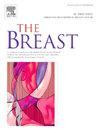Comparison of neoadjuvant and adjuvant chemotherapy for operable triple-negative breast cancer before the era of immune checkpoint inhibitors: A retrospective study from the Japanese National Clinical Database-Breast Cancer Registry
IF 5.7
2区 医学
Q1 OBSTETRICS & GYNECOLOGY
引用次数: 0
Abstract
Background
While neoadjuvant chemotherapy (NAC) is recommended for stage II-III triple-negative breast cancer (TNBC), its equivalence to adjuvant chemotherapy (AdjC) has been questioned based on a retrospective study using the National Cancer Database in the United States, which lacked adjustment for important covariates. Given the unlikelihood of new randomized trials being conducted, well-designed, large-scale, retrospective studies are needed.
Patients and methods
We retrospectively analyzed operable TNBC patients from the Japanese National Clinical Database- Breast Cancer Registry (2012–2016). Inclusion criteria were clinical stage I-IIIB, estrogen receptor (ER) < 10 %, progesterone receptor (PgR) < 10 %, and HER2-negative. We excluded patients with carcinoma in situ, cT4a/T4c/T4d, cN3, cM1, bilateral breast cancer, male, non-epithelial tumor, no chemotherapy, no surgery and no follow-up. Primary and secondary outcomes of overall survival (OS) and recurrence-free survival (RFS) were compared between NAC and AdjC using Cox proportional Hazard regression among the exact matched cohort based on age, BMI, cT, cN, histology, ER/PgR positivity, chemotherapy regimen, breast operative technique, radiotherapy, and institution size.
Results
Among 9,000 AdjC and 5,520 NAC patients, 3,256 matched cases were compared. OS and RFS were significantly worse for patients with NAC (Hazard Ratio 1.45 (95 % confidence interval 1.26–1.68) and 1.33 (1.19–1.49), respectively), particularly in patients <65 years, with stage II-IIIB, and with invasive ductal carcinoma.
Conclusion
Patients with NAC had worse prognosis, possibly due to unadjusted confounders. Although the availability of immune checkpoint inhibitors (ICIs) limits the clinical impact, the result could provide supplemental insights for treatment decisions in patients who are not candidates for ICIs.
免疫检查点抑制剂时代之前可手术三阴性乳腺癌的新辅助和辅助化疗的比较:来自日本国家临床数据库-乳腺癌登记处的回顾性研究
虽然新辅助化疗(NAC)被推荐用于II-III期三阴性乳腺癌(TNBC),但基于美国国家癌症数据库的一项回顾性研究,其与辅助化疗(AdjC)的等效性受到质疑,该研究缺乏对重要协变量的调整。由于不太可能进行新的随机试验,因此需要进行精心设计的大规模回顾性研究。患者和方法我们回顾性分析了日本国家临床数据库-乳腺癌登记处(2012-2016)中可手术的TNBC患者。纳入标准为临床分期I-IIIB、雌激素受体(ER)及lt;10%,孕激素受体(PgR) <;10%, her2阴性。我们排除了原位癌、cT4a/T4c/T4d、cN3、cM1、双侧乳腺癌、男性、非上皮性肿瘤、未化疗、未手术、未随访的患者。基于年龄、BMI、cT、cN、组织学、ER/PgR阳性、化疗方案、乳房手术技术、放疗和机构规模,采用Cox比例风险回归比较NAC和AdjC患者的总生存期(OS)和无复发生存期(RFS)的主要和次要结局。结果在9000例AdjC和5520例NAC患者中,比较了3256例匹配病例。NAC患者的OS和RFS明显更差(风险比分别为1.45(95%可信区间1.26-1.68)和1.33(95%可信区间1.19-1.49),尤其是65岁、ii期- iiib期和浸润性导管癌患者。结论NAC患者预后较差,可能与未校正的混杂因素有关。尽管免疫检查点抑制剂(ICIs)的可用性限制了临床影响,但该结果可以为非ICIs候选患者的治疗决策提供补充见解。
本文章由计算机程序翻译,如有差异,请以英文原文为准。
求助全文
约1分钟内获得全文
求助全文
来源期刊

Breast
医学-妇产科学
CiteScore
8.70
自引率
2.60%
发文量
165
审稿时长
59 days
期刊介绍:
The Breast is an international, multidisciplinary journal for researchers and clinicians, which focuses on translational and clinical research for the advancement of breast cancer prevention, diagnosis and treatment of all stages.
 求助内容:
求助内容: 应助结果提醒方式:
应助结果提醒方式:


